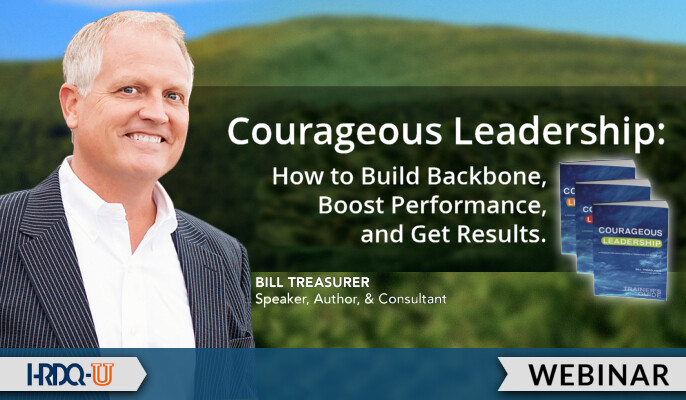Rate this post
Empowering individuals to exhibit courageous behavior often involves granting them permission to embrace leadership courage. Learn how Bill Treasurer has found courage in his own roles and how you can, too.

Empowering individuals to exhibit courageous behavior often involves granting them permission to embrace leadership courage. Learn how Bill Treasurer has found courage in his own roles and how you can, too.
So what exactly makes Treasurer an expert on the subject of courage? In his webinar, Bill explained to the participants that he has been to places far and wide (such as Singapore, Hong Kong, Tokyo, Abu Dhabi, and all throughout the United States and Canada). “I’ve worked with thousands of executives all over the globe doing courage-building, and everywhere I go, I learn something from my clients about how to be more courageous. They inspire me every day, and then I take the lessons that I learned around the globe, and I work with people like you to inspire a culture that promotes creativity and courage.”
He continued, “I think that courage is the first virtue of business, and it’s the first virtue of organizations, and it’s the first virtue of leadership. I mean, just think of all the important concepts that connect to the idea of courage. To be a leader means to render bold decisions that some people are going to disagree with. To be a leader means having courage. To be an innovator and a creative person means to draw outside of the lines and even make some mistakes.”
Then Treasurer asked, “What’s driving the need for more courage in your organizations?”
Some of the responses were:
As you can see, there are many factors that drive the need for courage in the workplace!
Courage is a skill, and people with courage perform better.
Treasurer explained the difference between the comfort zone and the discomfort zone. “Comfort and growth don’t coexist.”
The concept of fear was then addressed. “The key here is sweaty palms. When did you last do something that caused your palms to sweat at work?”
He continued, “Another good question is, when was the last time you did something for the first time? When was the last time you did something for the first time? Now if you’re a leader, so that’s your first responsibility is to make sure that you’re the first one up and off whatever high dive platform you’re wanting people to jump off of, but you have a second responsibility as a leader, too and that is to make people uncomfortable. Let me say it again. Your job as a leader is to make people uncomfortable.”
Speaking of the high dive platform, Treasurer told a personal anecdote of his experience as a diver and what he learned from it. The sport changed his life and helped him shape who he is today.
Trust is important when it comes to courage. “Trust takes courage. To be the first one to sort of put down your weapons and get disarmed and say you know what, I know I might get hurt in doing this, but I’m going to trust you. That takes a lot of courage. So we’ve got to try, trust, and tell.” Those are the ‘Three Buckets of Courage.
The webinar concluded with, “Your final tip is to create safety for people. If you want them to grow, progress, and evolve, you’ve got a make it safe for them to do so.” Think about that concept and how you can make it work for you.
Bill Treasurer is founder and chief encouragement officer at Giant Leap Consulting (GLC), a courage-building company that exists to help people and organizations live more courageously.
Bill is considered the originator of the new organizational development practice of “courage-building.” Bill is the author of the internationally bestselling book, Courage Goes to Work. The book provides practical strategies for inspiring more courageous behavior in workplace settings. In 2009, the book became the 6th bestselling management book in China.
Bill is also the author of Courageous Leadership: Using Courage to Transform the Workplace. As a comprehensive off-the-shelf training program, the material is designed to help organizational development practitioners and training professionals inspire more courageous behavior in their organizations. The program has been taught to thousands of leaders in 11 countries on 5 continents.
For over two decades, Bill has designed and delivered leadership and succession planning programs for experienced and emerging leaders for clients such as NASA, Accenture, CNN, Saks Fifth Avenue, Hugo Boss, UBS Bank, Lenovo, the Pittsburgh Pirates, the CDC, the National Science Foundation, and the U.S. Department of Veterans Affairs.
Learn more at www.giantleapconsulting.com and connect with Bill on LinkedIn.
Leaders are expected to be passionate, decisive, humble, and more. Learn how to lead with courage as the key to becoming a successful leader.

Discover more leadership skills webinars and blog posts
Access more valuable HRDQ-U content by Bill Treasurer
The most common word shared across most definitions of leadership is influence
The way we work has changed exponentially and for good
Imagine that the organization you work for is charged with developing a leadership training program that was built around the

Sign up for more as a member of HRDQ-U
HRDQ-U offers much of its learning content free to visitors, including live and select webinars, blog posts, and more, with new events and posts shared every week. However, there is much more learning available. You can access our complete library of on-demand webinars and other training events and content by simply signing up.